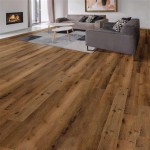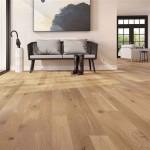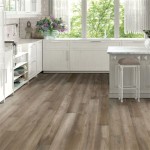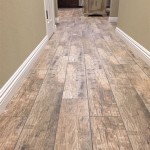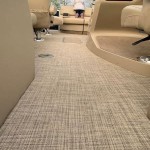Brick Look Flooring: A Comprehensive Guide
Brick look flooring has emerged as a popular choice for both residential and commercial spaces, offering a unique blend of durability and aesthetic appeal. This guide will delve into the essential aspects of brick look flooring, providing valuable information to help you make informed decisions about your flooring project.
Types of Brick Look Flooring
Brick look flooring is available in various materials, each with its own advantages and characteristics:
* Porcelain Tiles: Highly durable and water-resistant, making them ideal for high-traffic areas. * Ceramic Tiles: Similar to porcelain but more porous, requiring sealing to enhance water resistance. * Luxury Vinyl Tiles (LVT): Waterproof, easy to install, and can mimic the texture of real brick. * Laminate Flooring: Budget-friendly and scratch-resistant, but not water-resistant.Benefits of Brick Look Flooring
Brick look flooring offers numerous benefits:
* Durability: Bricks are known for their exceptional durability, making them resistant to wear and tear. * Aesthetics: The charming and classic look of brick adds a touch of rustic elegance to any space. * Easy Maintenance: Brick look flooring is generally easy to clean and maintain, requiring regular sweeping and mopping. * Versatility: Brick look flooring complements various interior design styles, from traditional to modern.Considerations for Choosing Brick Look Flooring
Before selecting brick look flooring, consider these factors:
* Usage: Determine the intended use of the flooring and choose the appropriate material based on durability and water resistance. * Design: Select a brick pattern and color that aligns with the overall design aesthetic of the space. * Texture: Decide on the desired texture, ranging from smooth to textured, to create the desired ambiance. * Budget: Factor in the cost of materials, installation, and maintenance when setting your budget.Installation and Maintenance
Proper installation and maintenance are crucial for the longevity of brick look flooring:
* Installation: Professional installation is recommended to ensure proper alignment and adhesion. * Grouting: Grout should be applied to fill gaps between tiles to prevent moisture penetration. * Cleaning: Regular sweeping and mopping with a pH-neutral cleaner help maintain the flooring's appearance. * Sealing: Periodic sealing is recommended for ceramic tiles to enhance water resistance.Conclusion
Brick look flooring offers an array of benefits, from durability to aesthetic appeal. By understanding the types, benefits, considerations, and installation and maintenance requirements, you can make informed decisions about using brick look flooring in your home or commercial space. Whether you prefer the classic charm of porcelain tiles or the ease of LVT, brick look flooring is a versatile and timeless choice that will enhance any interior design.

Authentic Brick Floor Tiles Experienced And Stone

Brick Flooring Tiles Thin Walls Floor Tile

Authentic Brick Floor Tiles Experienced And Stone

Why You Should Choose A Brick Look Porcelain Tile Floor

Diy Faux Brick Flooring Sincerely Marie Designs

Authentic Brick Floor Tiles Experienced And Stone

Entryways And Hallways Inglenook Brick Tiles Pavers Thin Tile Floor

Brick Flooring Timeless Beauty In The Home Town Country Living

Authentic Brick Floor Tiles Experienced And Stone

Brick Flooring In Vinyl Retro Timeless Renovation
Related Posts

